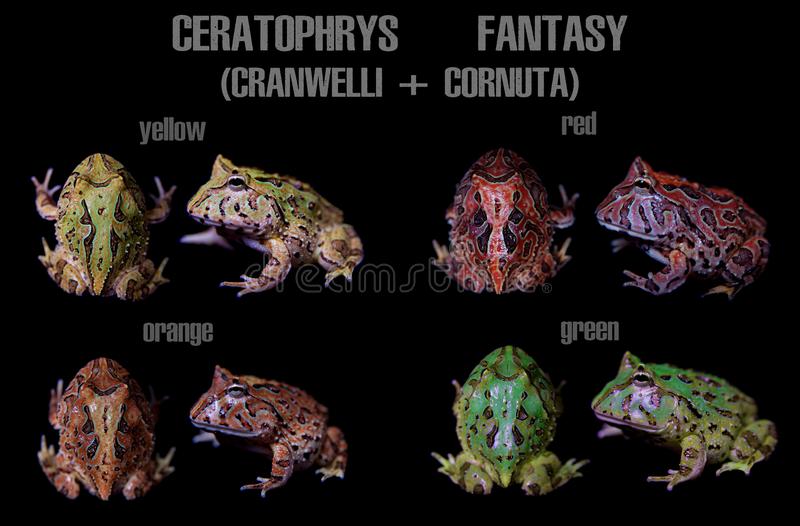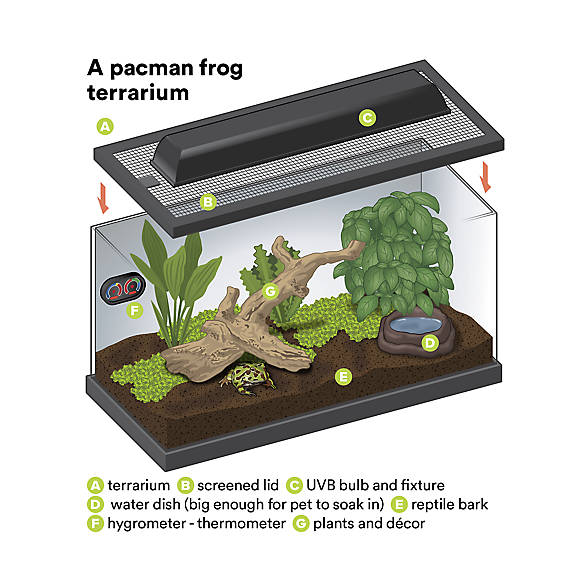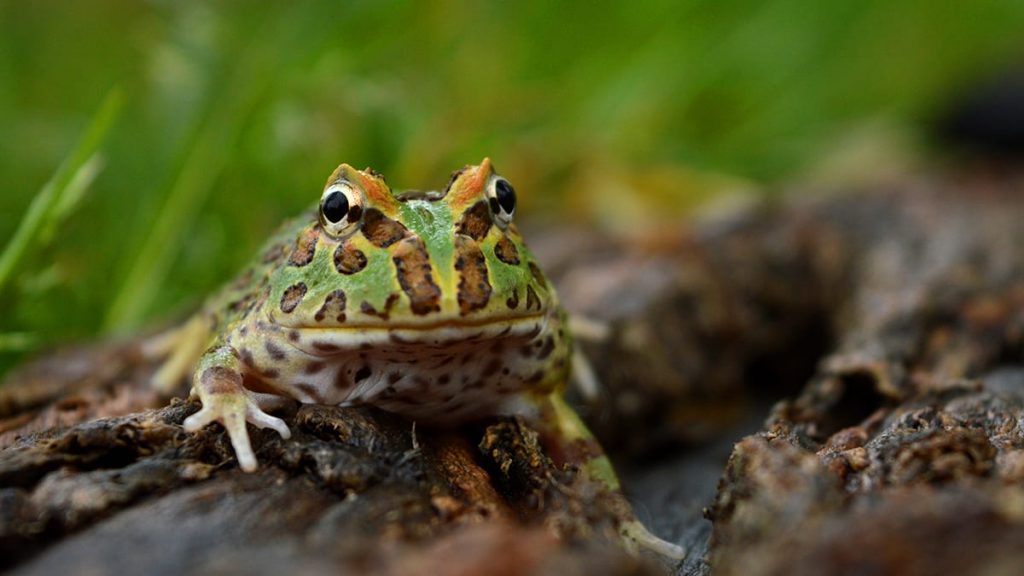By Conner Tighe
The following article is a mix of expert opinion and personal experience. Not every Pacman Frog will show the same characteristics, and this is merely general information.
These curious creatures are native to South America, giving their name the South American Horned Frog. Contrary to what most might think, Pacman Frogs differ quite a lot from other frogs in several ways. However, you will find they are quiet, sedentary, and some of the easiest pets to care for. Take a look at what they require if you’re considering extending your knowledge of the animal world.
Diet:

When they are small, it’s best to feed them small insects like crickets, mealworms, and wax worms. As they get older, you can feed them small rodents and other frogs, if you wish, but it is not required. Feed them 1-2 times a week.
Behavior:
One of the less known facts about them is the fact they are poor swimmers. While you can have small water bowls for other frog species, I don’t recommend having bodies of water in their habitat as they could drown. Pacman Frogs are “sit and wait” predators much like the Trapdoor Spider. They will remain completely still until they spot prey and will lunge. Although there have been accounts of Pacman Frogs croaking and making mating calls, I have yet to hear mine make any noise even once. It’s challenging to determine the gender of the Pacman Frog, so there’s no telling what gender you will end up with. However, females will grow to be bigger than males.
As a pet:

A 10-gallon tank will suffice for these frogs to have long-lived lives—7-10 years. A moist substrate should be used as they will burrow and remain there for days, even weeks, without moving. Eco Earth, coconut fiber, and other soil-like substrates are best. Pacman Frogs will grow up to be 6 inches long. Since they are native to humid environments, it’s best to have a heating pad attached to the side of the tank allowing the frog to have a warm and cool side of the habitat. Do not attach the heating pad to the top or bottom of the tank as the bottom will burn the frog when they burrow, and the top will not give off enough heat. Clean out the tank approximately once a month at least. They are not messy pets and will not produce stool often. But be sure to remove the stool when they do go.
The main negative with these pets is their lack of physical attachment. Under no circumstances should you touch or pet them as the oil in our skin can harm them. Pacman frogs are naturally aggressive eaters and will bite anything that approaches them. That’s why I recommend using tongs when feeding them. Pacman Frogs are not venomous but do have fangs, one of the only frog species to have teeth. Since they absorb liquid through their skin, it’s best to regularly mist or gently pour water over them to remain hydrated. Never place another Pacman Frog with another as one will kill and most likely eat the other. It’s best to have them alone in the habitat.
Sources: The Spruce Pets, Animal Corner, The Pet Enthusiast, Topflight Dubia
Images: Dreamstime.com, PetSmart
Featured Image: Pet Emporium

